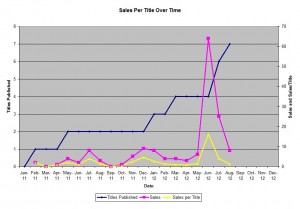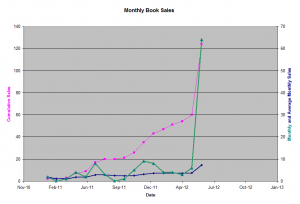I’m mostly out of energy today. I’m not sure why, since it’s raining (the remnants of the hurricane) and rain usually perks me up and energizes me. I assume it’s because my diet lately hasn’t been so good. Maybe I’ll eat right this weekend and, with the extra day of rest, will come into the office suitably energized on Tuesday.
I recently left the Yahoo group The Writers View 2 (TWV2) over comments being made, by one individual in particular but echoed by others, concerning how those who opt to self-publish are lazy. They are lazy because they don’t want to go through the process that writer did. Before he left the ministry and went full-time as a writer in 1984, he apparently went through a lengthy break-in period. He wrote magazine articles. He wrote other short pieces, he was a ghost writer or collaborator. He wrote under more than one name. And finally he published some books of his own, and his income rose to the point where he could go full-time. Of course, for many years he supplemented his income by teaching at writers conferences and mentoring other writers for a fee.
At some point about two months ago (unfortunately I didn’t save the e-mail) he said that those who opt to self-publish are lazy, that they don’t want to take the time to learn the art and craft of writing or the business of publishing, i.e. trade publishing. This, however, requires translation: Those who self-publish are trying to short-circuit the route I took, which because I took it that is the only legitimate route to being published.
Then, a couple of weeks ago he wrote this in an e-mail to the group:
if you can’t take criticism–and some people can’t–forget what I said, don’t take advantage of learning opportunities, and spend your money on self-publishing your books. Let your readers tell you how badly you write.
This also requires translation: Those who are self-published can’t take criticism. That’s why they self-publish: so that they don’t have to have editors critique their work. The don’t learn. Their readers will be the ones to critique their work.
Sorry, Mr. Experienced Full-Time Writer. I’m not lazy. Nor have I decided to short-circuit the route to being published. It’s just another route, as legitimate as the one you took. And I can take critique as well as anyone can, I’m sure as well as you can.
I chose to self-publish when it became clear to me that many publishable works were being turned down simply because of a shortage of slots at publishers; that the decision on which 1 or 2 of 10 or 20 publishable works to publish was made on sequential gatekeepers whose criteria was a guesstimate of which book would sell best, and that their track record in making these choices was abysmal.
I chose to self-publish in part because you wrote that you didn’t feel your publishers gave you much in the way of editorial services, which was a change from when you broke in. Several others agreed, and most publishing professionals (writers, agents, editors) now advise that the person who wants to break into trade publishing should hire a freelance editor to go over their manuscript before they submit to an agent or editor. These same insiders advise the writer considering self-publishing to do the same. So what’s the difference?
Anyhow, having been called lazy, having been accused of not being able to take criticism, having been accused of not being willing to learn, I left TWV2. If I want to be abused, better it come from someone who bought my book and left a 1 star review than by a bunch of out of touch publishing insiders. At least I would have a sale.
Today the monthly newsletter of Mr. Experienced Full-Time Writer arrived in my e-inbox. I forgot I was subscribed to it. Another bridge burned, though silently as this writer’s un-subscription service doesn’t ask you for a reason for unsubscribing.
I think I’ll enjoy this holiday weekend.





 s Are Screwing-Up America is so close to being finished I can taste it. Each chapter is complete, though for several chapters I’ve thought of an item or two I’d like to add. Had one of those come to mind yesterday evening, didn’t write it down, and this morning it was gone. Hopefully I can get that back. I made an inquiry to the Congressional Budget Office about getting better quality graphs directly from them instead of pulling them from CBO publication PDFs; so far no response. I suppose I’ll have to contact my congressman’s office to get them.
s Are Screwing-Up America is so close to being finished I can taste it. Each chapter is complete, though for several chapters I’ve thought of an item or two I’d like to add. Had one of those come to mind yesterday evening, didn’t write it down, and this morning it was gone. Hopefully I can get that back. I made an inquiry to the Congressional Budget Office about getting better quality graphs directly from them instead of pulling them from CBO publication PDFs; so far no response. I suppose I’ll have to contact my congressman’s office to get them.

